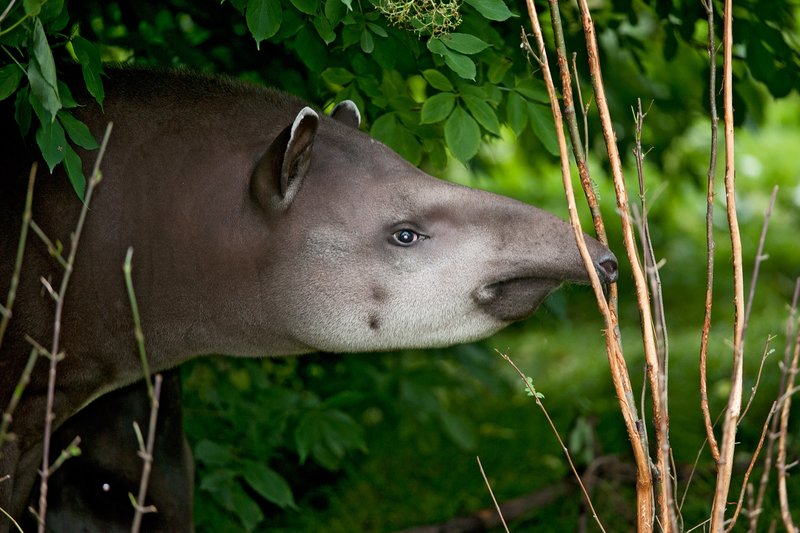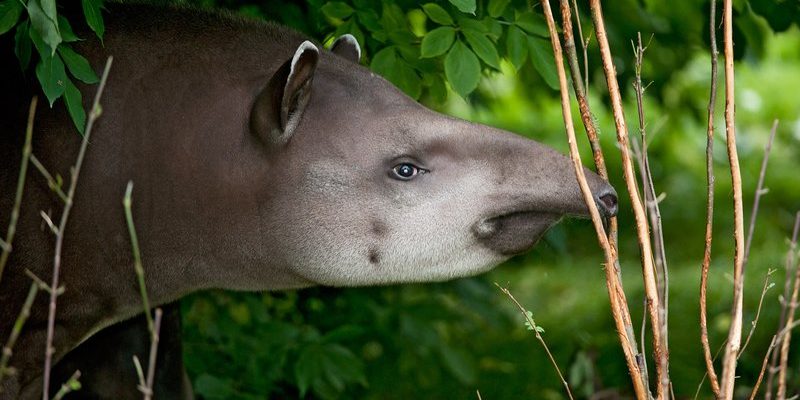
The Brazilian tapir, known scientifically as *Tapirus terrestris*, is the largest terrestrial mammal in South America. With a distinctive body shape, short legs, and a flexible snout, it certainly catches the eye. But beyond their quirky appearance, these animals represent a vital piece of ecological history. Let’s dive into their evolutionary past and uncover how the Brazilian tapir found its place in the world.
The Origins of Tapirs
The story of tapirs begins around 55 million years ago during the Eocene epoch. You might be surprised to learn that their earliest ancestors roamed the earth more like a horse than the tapirs we know today. Back then, these animals lived in lush, forested environments, and their evolutionary journey started in North America.
Over time, the ancestors of modern tapirs migrated across continents. They adapted to various conditions and climates, leading to several species emerging. By the Miocene epoch, around 23 to 5 million years ago, tapirs had made their home in South America, where they continued to evolve into the creatures we recognize today.
Strongly built with a stout body and thick skin, the Brazilian tapir developed specialized features that helped them in their environment. Their short, sturdy legs are perfect for navigating dense forests and riverbanks, while their long snouts are excellent for grasping leaves and fruits. It’s as if nature crafted them for a specific role in their ecosystems!
Diversity of Tapir Species
There are five recognized species of tapirs today. The Brazilian tapir is just one of them. The others include the Baird’s tapir, the mountain tapir, the Malayan tapir, and the lowland tapir. Each species has adapted to its unique environment, which showcases the incredible diversity within the tapir lineage.
– Baird’s Tapir: Found primarily in Central America, this species is slightly larger and has a distinctively smaller, more elongated snout.
– Mountain Tapir: This rare species lives in the Andean regions. Its thick fur helps it adapt to the cooler climate.
– Malayan Tapir: Known for its striking black and white coloration, this tapir is the only species found in Asia.
– Lowland Tapir: Closely related to the Brazilian tapir, it shares similar habitats but is more often found in swampy regions.
Each species tells a unique story about how tapirs adapted to different environments, demonstrating their resilience and evolutionary success. Isn’t it incredible how nature shapes life in so many ways?
The Brazilian tapir has developed several fascinating adaptations that help it thrive in its environment. Their primarily herbivorous diet consists of leaves, fruits, and aquatic plants. So, it’s no surprise that they have strong, grinding teeth, which are perfect for munching on tough foliage.
Their unique snout, which resembles a miniature trunk, is not just for show. It allows them to reach up high to grab leaves or dip into water to forage for aquatic plants. It’s like having a Swiss Army knife right on their face! This flexibility makes them excellent foragers in the dense forests and rainforest regions.
Another striking adaptation is their thick, protective skin. This feature helps them ward off predators and withstand the rough foliage of their habitat. However, it also comes with a downside—because their skin is thick, they can easily become overheated. To cool off, you’ll often find them splashing in rivers or mud, which also serves as a natural sunscreen.
Conservation Status and Threats
Unfortunately, the Brazilian tapir faces numerous threats today, primarily due to habitat loss. Deforestation for agriculture and urban development has significantly reduced their natural habitats, making it difficult for these creatures to find food and shelter.
Additionally, hunting poses a problem. In some regions, tapirs are hunted for their meat and skin, which further endangers their populations. The International Union for Conservation of Nature (IUCN) lists the Brazilian tapir as “vulnerable,” indicating that their numbers are declining.
Conservation efforts are underway to protect these unique mammals. Organizations are working to create protected areas and raise awareness about the importance of biodiversity. By preserving their habitats, we can ensure future generations get to experience the wonders of the Brazilian tapir.
Importance in Ecosystems
The Brazilian tapir plays a crucial role in maintaining the health of its ecosystem. As herbivores, they help manage vegetation growth and promote plant diversity. By foraging on fruits and plants, they also act as seed dispersers. When they eat fruit and later excrete the seeds, they help new plants grow in different areas. This process supports the regeneration of forests and contributes to a healthy ecosystem overall.
Think about it this way: tapirs are like gardeners of the forest! Without them, we would see an imbalance in plant life, which could have cascading effects on other species that rely on those plants for food and shelter.
Additionally, tapirs are integral to their food chains, acting as prey for large carnivores like jaguars and pumas. Maintaining tapir populations fosters a balanced food web that supports a diverse array of life within their habitats.
The Future of the Brazilian Tapir
Looking ahead, the future of the Brazilian tapir hinges on conservation efforts, habitat protection, and increased awareness. Many organizations are dedicated to studying these animals and their behaviors, which can help to inform effective strategies for their protection.
You might be wondering what you can do to contribute. Simple actions like supporting conservation organizations, spreading awareness, and making sustainable choices in your daily life can make a difference. Remember, every small action counts!
With continued efforts to protect their habitats and educate communities, there’s hope that the Brazilian tapir will endure and thrive. After all, these fascinating creatures deserve a chance to carry on their remarkable evolutionary journey.
In conclusion, the evolutionary history of the Brazilian tapir is a captivating tale steeped in resilience and adaptation. As we reflect on their origins, adaptations, and ecological importance, let’s commit to protecting these unique mammals and ensuring their legacy continues for generations to come.

